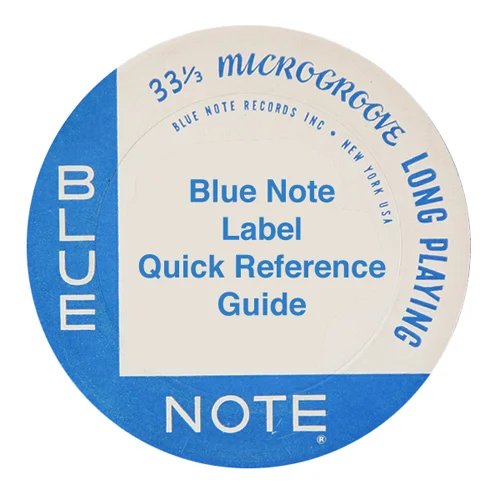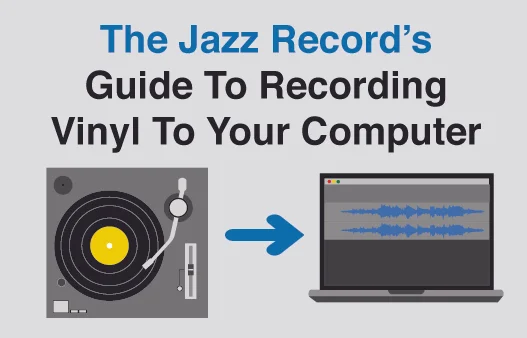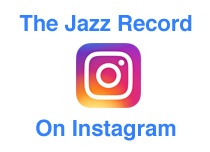All Together Now: Charlie Rouse - "Two Is One"
/Charlie Rouse • Two Is One • 1974 • Strata-East Records
Recorded in 1974 at The Warehouse, NYC
The Tracks:
A1. Bitchin'
A2. Hopscotch
A3. In A Funky Way
B1. Two Is One
B2. In His Presence Searching
The Players:
Charlie Rouse - Tenor Sax, Bass Clarinet (B2)
George Davis - Guitar (A1, A3, B2)
Paul Metzke - Guitar
Martin Rivera - Bass (A1, A3)
Stanley Clarke - Bass (A2, B1, B2)
Calo Scott - Cello
Azzedin Weston - Conga (A1, A3)
Airto Moreira - Percussion (A2, B1, B2)
David Lee - Drums
Charlie Rouse, 1962 (Photo Credit Unknown)
The Record:
It seems that every major jazz artist has a one-off sort of record in their discography, be it with strings, voices, spoken word or - as in this case - a foray into the funkier side of jazz. Charlie Rouse (going here as Charles Rouse) gets his chance on Two Is One, a funky soul jazz excursion on Strata-East, the artist-run label where creativity and pushing boundaries was at the forefront. Playing mostly with a group of session musicians, Rouse put together an album that may stray a bit from his hard bop roots, but is nonetheless an enjoyable and at times inventive record. Mention Two Is One to the right open-minded jazz connoisseur and you'll get a heady nod of acknowledgement to it's many charms.
The style of music played here - sophisticated soul jazz with some post bop and spiritual jazz thrown in for good measure - is very much a product of it's time. 1974 saw a whole slew of artists stretching the boundaries of what jazz music could be, combining elements from the past two decades into electric jazz adventures. The piano-less group that Rouse put together is a funky one, with lots of rhythmic playing behind either the searching solos of Rouse on the tenor or some inventive electric guitar work from either George Davis or Paul Metzke (two guys I am not familiar with in the least, but they certainly can play) who appear together on all but a coupls tracks. Cal Scott gets plenty of time to shine throughout on what sounds like an electrified cello, an unusual instrument for modern jazz to be sure, but one that manages to fit in just fine here.
The first side of the album is all slow burning soul jazz, highlighted by the opening track "Bitchin'" where Rouse shows off that he is more than capable of setting down soulful lines over a funky backbeat. The second side is where the group gets a whole lot more inventive, particularly on the title track where they mix some post bop madness with the soul jazz sound. "Two Is One" features different tempos throughout: in the "first section" the bass plays in 9/8 time, the drums in 6/8 time and the cello and tenor are in 3/4 time. For the "second section" the rhythm section switches to 7/8 time while cello and tenor move to 4/4 time (I know this not because I'm some sort of jazz savant, but because it is noted as such on the back cover). Stanley Clarke is on bass here and his deep and twisty electric bass line is placed prominently up front.
"Two Is One" is certainly the highlight of the album from a pure jazz standpoint, and it lives up to it's title, which according to Gene Lewis' liner notes is taken from a Thelonious Monk phrase meaning two people so in tune with one another that they become one. We know that Rouse and Monk were on this level, and it's nice to see on Two Is One that he was capable of carrying that kind of kindred musical connection to a more unique setting as well. The album finishes off with "In His Presence Searching," a spiritually informed jazz number that is reminiscent of the work being done during this period by the likes of Pharoah Sanders and Gary Bartz, (while not being quite as out there as their best work). The tune is all rhythmic glory, with Rouse and Scott playing introspective and penetrating solos throughout. It's a nice album closer, and a good reminder that while Two Is One may be best known for it's funkier excursions, Rouse had a few tricks up his sleeve and the album, when taken as a whole, is a complete statement from a legendary jazz musician.
The Vinyl:
Here we've got a first pressing - this one a promotional copy - on the always classy black and white Strata-East label. We can denote it as a first pressing by the presence of "A PRODUCT OF STRATA-EAST, INC., N.Y.C. 100010" beneath the logo up top. There was a subsequent re-issue in 1974 where that text is not present that could probably be considered an original pressing as well. The vinyl has a decent weight to it for a 1974 release, I wouldn't classify it as heavyweight, but it certainly isn't flimsy either.
I paid $10 at a local shop, an absolute steal considering that the few copies that recently sold on eBay ranged from $68 to $124. The ridiculously low price was explained by a quick visual inspection of the vinyl, it was beat up pretty good, almost reminiscent of a flea market or Goodwill find. But, hey, this was a rare Strata-East, so after a quick spin on the store's turntable didn't reveal any major flaws I knew I had to take it home. Even after a run through the Okki Nokki it still has a fair amount of surface noise, but not enough to distract from the music. It actually sounds real nice on the turntable, the music is loud and up front, disguising much of the wear to the vinyl. It's a reminder of the fickle nature of vinyl (and why it can be so frustrating to buy online sometimes), as I have LPs that visually outgrade this one by a country mile that sound infinitely worse than this one does.
The Strata-East label was founded in New York City in 1971 by Charles Tolliver and Stanley Cowell with the release of their Music Inc. album, when they couldn't find any major labels willing to put it out. The label was an artist-collective of sorts, informed in many ways by the Black Power movement of the 1960s and it's focus on self-reliance, entrepreneurship and self-determination. Musicians and producers would supply the label with a finished recording which was then pressed up and sold through Strata-East's distributors. The artist would then receive most of the profits, with the label only taking a small share after recouping any costs.
The label provided many important musicians an opportunity to release extremely creative jazz music at a time when it wasn't commercially viable. Many of the LPs from the label are prized by collectors, and can be pretty hard to come by (even online), as they were pressed in limited numbers upon their release. In any case, don't sleep on any Strata-East LPs you might find while you're out digging through the racks, there are more than a few hidden gems out there that are more than deserving of a place in any self-respecting vintage jazz vinyl collection.
For an excellent read on the history of Strata-East Records and a look at some of the best music the label had to offer, check out this nice article over at the Red Bull Academy Music Daily.
The Clips:
Here is Charlie Rouse with the Thelonious Monk Quartet (rounded out by Larry Gales on bass and Ben Ridley on drums) playing "Hackensack" live on the BBC in 1965.
Next is a killer performance of Rouse with the Mal Waldron Quintet performing in 1985 at The Village Vanguard. The group is full of legendary players, with Woody Shaw (tp), Mal Waldron (p), Reggie Workman (b) and the great Ed Blackwell (d). The video is nearly an hour long with some fantastic performances all around.












